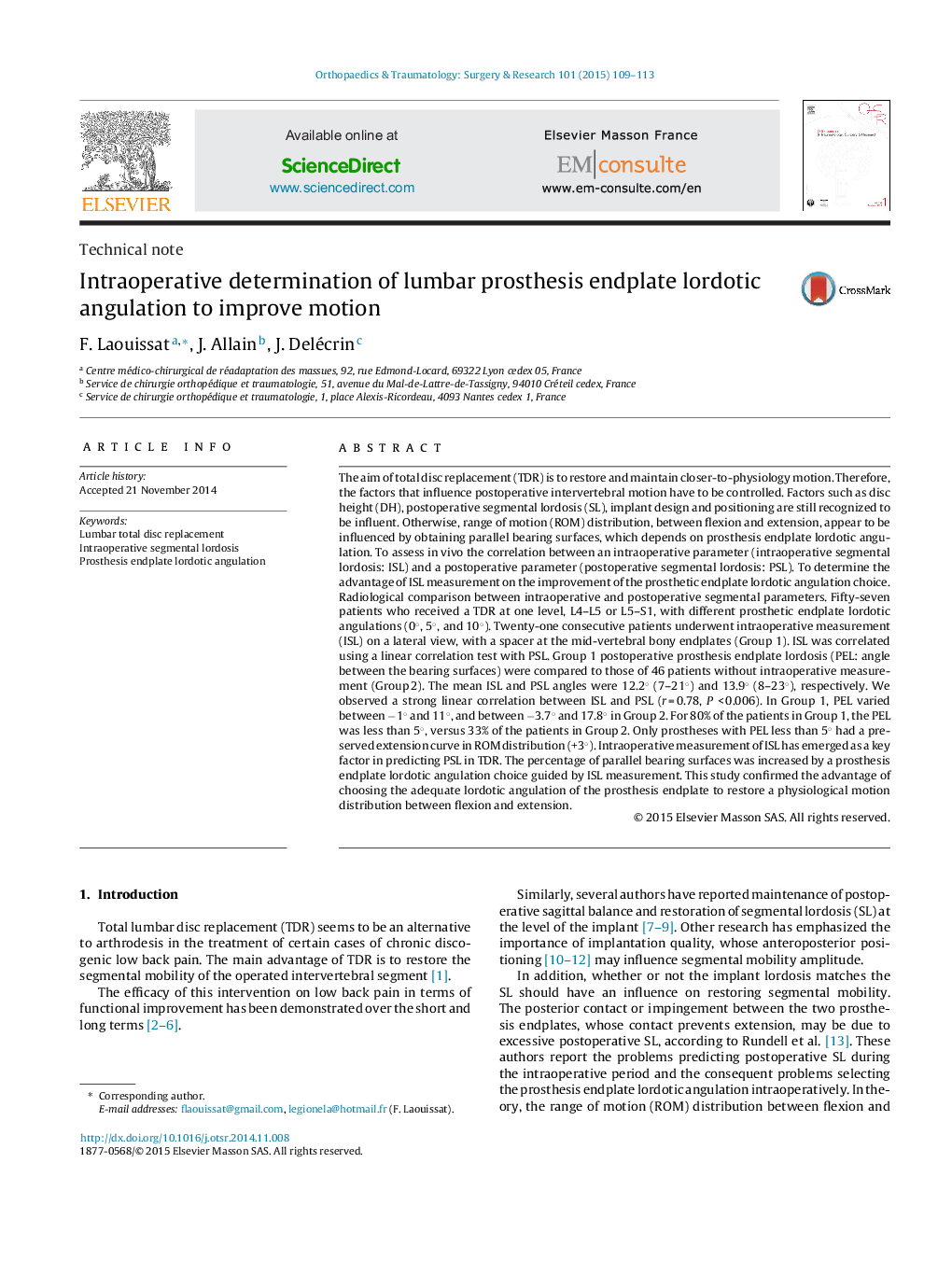| Article ID | Journal | Published Year | Pages | File Type |
|---|---|---|---|---|
| 4081244 | Orthopaedics & Traumatology: Surgery & Research | 2015 | 5 Pages |
The aim of total disc replacement (TDR) is to restore and maintain closer-to-physiology motion. Therefore, the factors that influence postoperative intervertebral motion have to be controlled. Factors such as disc height (DH), postoperative segmental lordosis (SL), implant design and positioning are still recognized to be influent. Otherwise, range of motion (ROM) distribution, between flexion and extension, appear to be influenced by obtaining parallel bearing surfaces, which depends on prosthesis endplate lordotic angulation. To assess in vivo the correlation between an intraoperative parameter (intraoperative segmental lordosis: ISL) and a postoperative parameter (postoperative segmental lordosis: PSL). To determine the advantage of ISL measurement on the improvement of the prosthetic endplate lordotic angulation choice. Radiological comparison between intraoperative and postoperative segmental parameters. Fifty-seven patients who received a TDR at one level, L4–L5 or L5–S1, with different prosthetic endplate lordotic angulations (0°, 5°, and 10°). Twenty-one consecutive patients underwent intraoperative measurement (ISL) on a lateral view, with a spacer at the mid-vertebral bony endplates (Group 1). ISL was correlated using a linear correlation test with PSL. Group 1 postoperative prosthesis endplate lordosis (PEL: angle between the bearing surfaces) were compared to those of 46 patients without intraoperative measurement (Group 2). The mean ISL and PSL angles were 12.2° (7–21°) and 13.9° (8–23°), respectively. We observed a strong linear correlation between ISL and PSL (r = 0.78, P < 0.006). In Group 1, PEL varied between −1° and 11°, and between −3.7° and 17.8° in Group 2. For 80% of the patients in Group 1, the PEL was less than 5°, versus 33% of the patients in Group 2. Only prostheses with PEL less than 5° had a preserved extension curve in ROM distribution (+3°). Intraoperative measurement of ISL has emerged as a key factor in predicting PSL in TDR. The percentage of parallel bearing surfaces was increased by a prosthesis endplate lordotic angulation choice guided by ISL measurement. This study confirmed the advantage of choosing the adequate lordotic angulation of the prosthesis endplate to restore a physiological motion distribution between flexion and extension.
